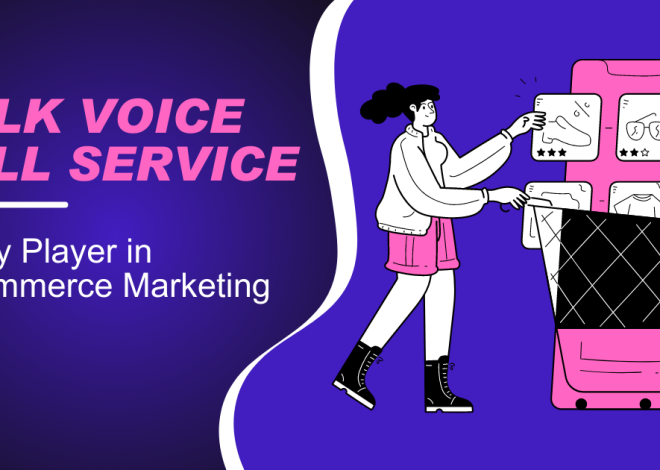Unlocking the Power of Agile Software Development for Modern Enterprises
In today’s fast-paced digital world, businesses must adapt to rapidly changing market demands and technological advancements. Agile software development has emerged as a leading methodology to help companies remain competitive and responsive. This blog explores the fundamentals of Agile software development, its benefits, key principles, and how businesses can successfully implement Agile practices to achieve their objectives.
What is Agile Software Development?
Agile software development is a methodology that promotes iterative development, collaboration, and flexibility. Unlike traditional waterfall models, Agile focuses on delivering small, incremental improvements to software projects, allowing teams to respond to changes quickly and efficiently.
Key Principles of Agile Software Development
- Customer Collaboration Over Contract Negotiation: Agile emphasizes continuous communication with customers to ensure their needs are met throughout the development process.
- Responding to Change Over Following a Plan: Agile teams are flexible and adaptable, ready to pivot when new requirements or market conditions arise.
- Working Software Over Comprehensive Documentation: The primary measure of progress is the delivery of functional software, rather than extensive documentation.
- Individuals and Interactions Over Processes and Tools: Agile values the skills and creativity of team members, promoting collaboration and communication.
Benefits of Agile Software Development
Enhanced Flexibility and Adaptability
Agile’s iterative nature allows teams to adapt to changes in project requirements, market trends, and customer feedback swiftly. This flexibility is crucial in today’s dynamic business environment, where staying ahead of competitors requires rapid adaptation.
Improved Product Quality
By involving stakeholders throughout the development process and conducting regular testing, Agile teams can identify and address issues early, leading to higher-quality software products.
Faster Time-to-Market
Agile’s focus on delivering small, functional increments means that businesses can bring products to market faster. This accelerated time-to-market is a significant advantage in industries where speed is a critical success factor.
Increased Customer Satisfaction
Frequent releases and ongoing collaboration with customers ensure that the final product aligns closely with user needs and expectations, leading to higher customer satisfaction and loyalty.
Enhanced Team Collaboration
Agile fosters a collaborative environment where team members work together, share knowledge, and support each other. This collaborative culture leads to more innovative solutions and a more motivated workforce.
Implementing Agile in Your Organization
Building an Agile Team
- Cross-Functional Teams: Assemble teams with diverse skills and expertise to handle various aspects of the project.
- Dedicated Roles: Assign specific roles such as Product Owner, Scrum Master, and Development Team members to ensure clarity and accountability.
- Continuous Training: Invest in ongoing training and development to keep team members updated on Agile practices and tools.
Adopting Agile Frameworks
Several Agile frameworks can guide your organization’s implementation, including Scrum, Kanban, and Lean. Each framework has unique characteristics, and choosing the right one depends on your specific project requirements and team dynamics.
Scrum
Scrum is one of the most popular Agile frameworks, known for its structured approach to project management. It involves:
- Sprints: Short, time-boxed periods (usually 2-4 weeks) during which specific work is completed and made ready for review.
- Daily Stand-Ups: Brief daily meetings where team members discuss progress, obstacles, and plans for the day.
- Sprint Reviews and Retrospectives: Meetings held at the end of each sprint to review the work completed and discuss ways to improve future sprints.
Kanban
Kanban focuses on visualizing work, limiting work in progress, and improving flow. It involves:
- Kanban Boards: Visual boards that display tasks and their progress, helping teams manage workflow and identify bottlenecks.
- Continuous Delivery: Unlike Scrum’s time-boxed sprints, Kanban supports continuous delivery, allowing teams to release features as soon as they’re ready.
Lean
Lean emphasizes minimizing waste and maximizing value. Key principles include:
- Value Stream Mapping: Identifying and analyzing the flow of materials and information required to bring a product to the customer.
- Eliminating Waste: Removing activities that do not add value to the customer, such as unnecessary documentation or redundant processes.
Agile Software Development Company: Choosing the Right Partner
When selecting an Agile software development company, consider the following factors:
Experience and Expertise
Look for companies with a proven track record of successfully delivering Agile projects. Assess their expertise in your industry and their familiarity with the Agile frameworks you intend to use.
Communication and Collaboration
Effective communication is crucial for Agile success. Choose a partner that emphasizes transparent communication and collaboration throughout the development process.
Flexibility and Adaptability
Ensure the company is flexible and can adapt to changing requirements and market conditions. Their ability to pivot quickly will be a valuable asset to your project.
Technical Proficiency
Evaluate the technical skills and capabilities of the company’s development team. Their proficiency in relevant technologies and tools will significantly impact the quality and efficiency of your project.
Client Testimonials and Case Studies
Review client testimonials and case studies to gain insights into the company’s past performance and client satisfaction. This information will help you gauge their reliability and effectiveness.
Best Practices for Agile Software Development
Emphasize Continuous Improvement
Agile is an ongoing journey, not a one-time implementation. Regularly conduct retrospectives to identify areas for improvement and implement changes to enhance your Agile processes.
Foster a Culture of Collaboration
Encourage open communication and collaboration within your team. Break down silos and create an environment where everyone feels empowered to contribute their ideas and expertise.
Prioritize Customer Feedback
Actively seek and incorporate customer feedback throughout the development process. Their insights will help you create a product that truly meets their needs and expectations.
Focus on Delivering Value
Always prioritize delivering value to the customer. Ensure that every feature and functionality you develop addresses a specific user need or business objective.
Maintain a Sustainable Pace
Avoid overburdening your team with unrealistic deadlines or excessive workloads. Maintain a sustainable pace to prevent burnout and ensure consistent, high-quality output.
The Role of Business Intelligence in Agile Development
Enhancing Decision-Making
Business intelligence services tools can provide valuable insights into project performance, customer behavior, and market trends. These insights enable Agile teams to make data-driven decisions and adjust their strategies accordingly.
Identifying Opportunities and Risks
BI can help identify potential opportunities and risks early in the development process. By analyzing data, teams can proactively address issues and capitalize on emerging trends.
Measuring Performance and Progress
BI tools allow teams to track key performance indicators (KPIs) and measure progress against objectives. This visibility ensures that the project stays on track and aligned with business goals.
Supporting Continuous Improvement
By analyzing project data and performance metrics, BI tools can highlight areas for improvement. Teams can use this information to refine their processes and enhance overall efficiency.
Conclusion
Agile software development is a powerful methodology that can help businesses navigate the complexities of modern software projects. By embracing Agile principles, organizations can enhance flexibility, improve product quality, and achieve faster time-to-market. Impressico Business Solutions is here to support your Agile journey, providing expert guidance, customized solutions, and dedicated support to ensure your success.
Impressico Business Solutions offers comprehensive Agile software development services tailored to meet your unique business needs. Our experienced team of Agile practitioners can help you implement and optimize Agile practices, ensuring successful project outcomes. Here’s how we can assist you:
Agile Transformation
We guide organizations through the Agile transformation process, providing training, coaching, and support to help you adopt Agile methodologies effectively.
Custom Agile Solutions
Our team develops customized Agile solutions that align with your specific project requirements and business objectives. We leverage the latest tools and frameworks to deliver high-quality software products.
Continuous Delivery and Integration
We implement continuous delivery and integration practices to ensure that your software is always ready for release. This approach reduces time-to-market and enhances product quality.
Data-Driven Decision-Making
Our business intelligence services empower Agile teams with actionable insights, enabling data-driven decision-making and continuous improvement.
Dedicated Support
We offer ongoing support and collaboration throughout the development process, ensuring that your project stays on track and meets your goals.
FAQs
What is Agile software development?
Agile software development is a methodology that emphasizes iterative development, collaboration, and flexibility to deliver high-quality software products efficiently.
How does Agile differ from traditional waterfall models?
Unlike waterfall models, which follow a linear approach, Agile promotes iterative development, allowing teams to respond to changes quickly and adapt to evolving requirements.
What are the key benefits of Agile software development?
Key benefits include enhanced flexibility, improved product quality, faster time-to-market, increased customer satisfaction, and enhanced team collaboration.
What are some popular Agile frameworks?
Popular Agile frameworks include Scrum, Kanban, and Lean, each with unique characteristics and benefits.
How can business intelligence support Agile development?
Business intelligence tools provide valuable insights into project performance, customer behavior, and market trends, enabling data-driven decision-making and continuous improvement.
Why is it important to choose the right Agile software development company?
Choosing the right partner ensures that you have the necessary expertise, communication, and technical proficiency to successfully implement Agile practices and achieve your project goals.
How does Impressico Business Solutions support Agile software development?
Impressico Business Solutions offers Agile transformation, custom Agile solutions, continuous delivery and integration, data-driven decision-making, and dedicated support to ensure successful project outcomes.



